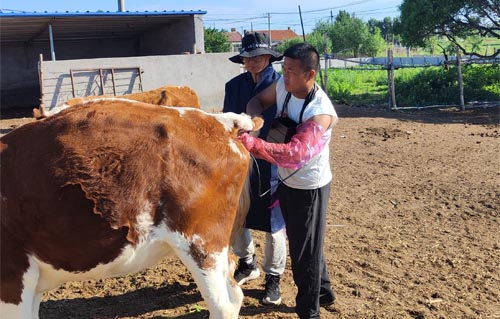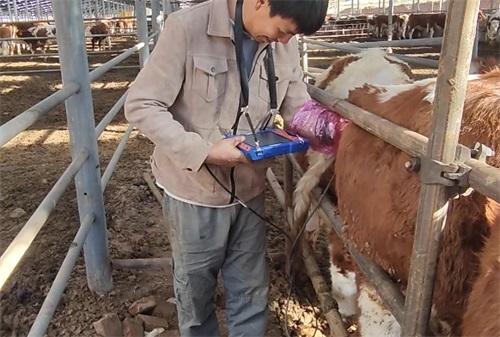When it comes to farm animal health, early and accurate diagnosis is critical—not only for the welfare of the animals but also for the efficiency and profitability of the entire operation. One of the most commonly used diagnostic tools in large animal practice is ultrasound, a non-invasive imaging method that allows veterinarians to visualize internal organs, reproductive structures, and soft tissues in real-time.
Whether you are managing a herd of dairy cows, a flock of sheep, or a swine production system, understanding how long a Veterinary ultrasound takes can help you plan your schedule, minimize animal stress, and make faster, informed decisions.
In this article, we’ll explore the typical duration of veterinary ultrasound exams for livestock, what factors influence exam time, what happens during the procedure, and how this fits into your overall herd health management strategy.
First Things First: What is Veterinary Ultrasound?
Veterinary ultrasound is a diagnostic imaging technique that uses high-frequency sound waves to produce real-time images of internal body structures. It is widely used in livestock for pregnancy diagnosis, evaluation of reproductive organs, and assessing soft-tissue injuries or diseases.

Average Duration of an Ultrasound Exam
The time required to perform an ultrasound exam on a farm animal can vary significantly depending on the type of animal, the purpose of the scan, the veterinarian’s experience, and the available equipment. However, we can break down the general time expectations as follows:
Pregnancy Diagnosis in Cattle: 2–5 minutes per animal
Pregnancy checks are among the most common uses of ultrasound in cattle. With portable ultrasound machines and a trained technician, experienced veterinarians can assess pregnancies very quickly—often under 5 minutes per cow. If the fetus is small and early in gestation, scanning may be even faster.Reproductive Tract Evaluation: 5–10 minutes per animal
When scanning the uterus and ovaries to monitor ovulation, detect cysts, or evaluate fertility issues, the exam takes longer. Each structure needs to be visualized from multiple angles, requiring more time and precision.Small Ruminants (Sheep & Goats): 2–4 minutes per animal
In ewes and does, pregnancy detection is typically done between 40–90 days of gestation. Ultrasound is fast and effective in these animals, especially using a transabdominal approach with a linear or convex probe.Swine (Pigs): 1–3 minutes per animal
Ultrasound is most commonly used to confirm pregnancy in sows around 21–30 days post-breeding. The process is very brief, especially in commercial settings using high-frequency transducers optimized for swine anatomy.Soft Tissue or Musculoskeletal Injury Evaluation: 10–20 minutes per animal
If the exam is for a lameness evaluation or internal soft tissue injury (e.g., liver, kidney, spleen, muscle), the procedure is more extensive. The veterinarian will need to scan multiple anatomical areas and may perform image measurements or Doppler flow studies.
Factors That Affect Exam Duration
While the numbers above are good benchmarks, the actual time needed can vary depending on:
Animal behavior and restraint: Calm animals allow faster, more accurate scanning. Inadequate restraint increases exam time.
Equipment quality: Modern portable ultrasound systems with high-resolution imaging reduce scanning time.
Operator experience: Seasoned veterinarians and technicians are faster and more efficient.
Type of probe used: Linear probes are ideal for reproductive exams, while convex or micro-convex probes are used for deeper tissue evaluation.
Field Setting vs. Clinical Setting
Ultrasounds performed in a barn or chute in the field may take longer due to lighting, positioning, and environmental distractions. In contrast, exams in a veterinary hospital or mobile unit with ideal conditions may be faster and more precise.

Benefits of Faster and Accurate Ultrasound Exams
Time is valuable—especially when dealing with large numbers of animals. Efficient ultrasound procedures bring many advantages to the farm:
Minimized animal stress due to shorter handling time
Reduced labor costs and faster throughput
Earlier pregnancy confirmation means faster culling and rebreeding decisions
Improved herd fertility and productivity
Increased diagnostic accuracy compared to palpation
Why It’s Worth the Time
Even though each exam may only take a few minutes, the value it adds is substantial. In a 100-cow herd, being able to scan 20–30 animals per hour can result in a complete herd check in a single morning. Furthermore, using ultrasound as part of routine herd health protocols allows early intervention, improving outcomes and minimizing losses.

Conclusion
Veterinary ultrasound exams in farm animals are generally fast and efficient, especially when performed by experienced professionals using portable equipment. While the average scan takes 2 to 10 minutes, the exact duration depends on the species, purpose, and conditions under which the scan is performed.
For livestock managers, understanding the time commitment and the value of ultrasound diagnostics is critical for making informed decisions that affect the bottom line of your operation.
References:
“Ultrasound in Bovine Reproduction,” University of Wisconsin School of Veterinary Medicine – https://fyi.extension.wisc.edu/dairy/ultrasound-in-bovine-reproduction/
“Ultrasound Use in Livestock,” Alberta Agriculture and Irrigation – https://www.alberta.ca/ultrasound-use-in-livestock.aspx
“Small Ruminant Ultrasound Techniques,” University of Missouri Extension – https://extension.missouri.edu/publications/g2087
“Use of Real-time Ultrasonography for Reproductive Management in Swine,” Iowa State University – https://www.extension.iastate.edu/veterinarydiagnosticlab/swine-ultrasound
tags:


